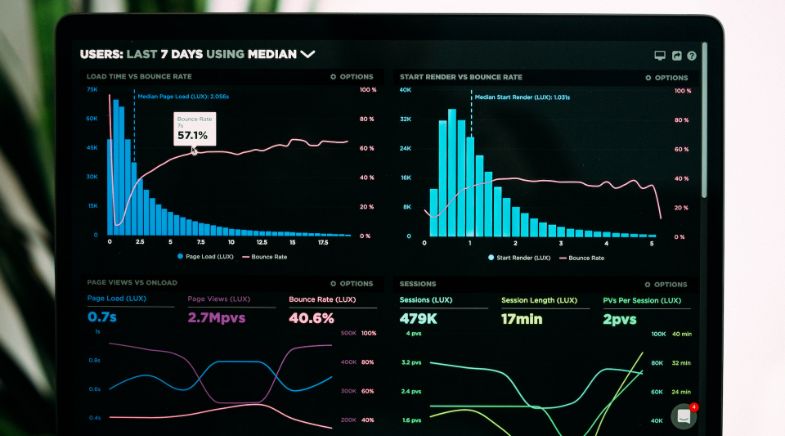As digital marketing continues to evolve, pay-per-click (PPC) advertising remains a cornerstone strategy for businesses aiming to drive traffic, generate leads, and boost sales.
With 2024 on the horizon, understanding the latest PPC trends is crucial for marketers looking to stay ahead of the curve.
This article explores the emerging trends in PPC advertising for 2024 and provides insights on how to adapt your strategies for optimal results.
1. Increased Focus on Artificial Intelligence (AI)
a. AI-Powered Ad Optimization
In 2024, the integration of AI in PPC advertising will become more pronounced. AI algorithms will enhance ad targeting, optimize bids in real-time, and analyze performance data to deliver better results. Advertisers will benefit from AI tools that can predict trends, automate routine tasks, and recommend strategic adjustments.
b. Enhanced Chatbots and Virtual Assistants
AI-driven chatbots and virtual assistants will become increasingly important in managing customer interactions. These tools can provide instant responses to inquiries, facilitating lead generation and enhancing customer experiences directly from ads.
2. Voice Search and Conversational PPC
a. Rise of Voice Search
With the growing use of smart speakers and voice-activated devices, voice search is reshaping the way users interact with search engines. In 2024, advertisers will need to optimize their PPC campaigns for voice search by focusing on natural language keywords and phrases that align with how people speak.
b. Conversational Advertising
Conversational PPC will gain traction as brands engage users through direct conversations via messaging platforms. Ads that facilitate two-way communication, such as interactive chat ads on social media, will become more prevalent, allowing businesses to build relationships with potential customers.
3. Emphasis on Video and Visual Advertising
a. Growth of Video Ads
Video content continues to dominate online engagement, and PPC advertising is no exception. In 2024, businesses will increasingly invest in video ads across platforms like YouTube, Instagram, and TikTok. Short-form videos will be particularly effective in capturing attention and conveying messages quickly.
b. Visual Search Optimization
As visual search technology advances, optimizing for visual search will become essential. Advertisers should incorporate image-based keywords and ensure high-quality visuals in their PPC campaigns to cater to users searching for products through images.
4. Personalization and Hyper-Targeting
a. Personalized Ad Experiences
In 2024, personalized advertising will reach new heights. Utilizing data from previous interactions, purchase history, and user preferences, marketers will craft highly personalized ad experiences that resonate with individual users. This approach will lead to higher engagement rates and conversions.
b. Hyper-Targeting Capabilities
Advancements in data analytics will enable hyper-targeting, allowing advertisers to segment their audience into even more specific groups. By targeting niche audiences based on detailed demographics, interests, and behaviors, businesses can deliver more relevant ads and improve overall campaign performance.
5. Integration of Augmented Reality (AR)
a. AR in Advertising
Augmented reality will become a powerful tool in PPC advertising. Brands will leverage AR technology to create immersive ad experiences that allow users to interact with products in a virtual environment. For example, furniture retailers may enable customers to visualize how a piece of furniture fits in their space through AR ads.
b. Interactive Ads
AR ads will provide interactive experiences that engage users and encourage them to take action, such as making a purchase or sharing their experience on social media.
6. Privacy and Data Regulations Impacting PPC
a. Adapting to Privacy Regulations
As privacy concerns grow and regulations tighten, such as the GDPR and CCPA, PPC advertisers will need to adapt their strategies. In 2024, transparent data collection practices and explicit user consent will be crucial for building trust and maintaining effective campaigns.
b. Contextual Targeting
With the decline of third-party cookies, advertisers will increasingly rely on contextual targeting. This approach focuses on delivering ads based on the content of the webpage rather than user behavior, allowing brands to reach relevant audiences while respecting privacy.
7. Sustainability and Social Responsibility
a. Eco-Friendly Advertising
Consumers are increasingly prioritizing sustainability, and this trend will influence PPC advertising strategies. In 2024, businesses that promote eco-friendly practices and products will resonate with environmentally conscious consumers. Ads highlighting sustainable initiatives and products will gain traction.
b. Supporting Social Causes
Brands that align their advertising with social responsibility will attract more attention. PPC campaigns that support social causes, community initiatives, or charitable endeavors will foster goodwill and strengthen brand loyalty.
8. Cross-Channel Integration
a. Unified Advertising Strategies
In 2024, the integration of PPC advertising across multiple channels will become increasingly important. Marketers will need to create cohesive strategies that encompass search engines, social media, and display networks to maximize reach and engagement.
b. Omnichannel Customer Journeys
Understanding the customer journey across various touchpoints will be essential. Advertisers will need to track user interactions across channels to deliver consistent messaging and improve conversion rates.
Conclusion
As we look forward to 2024, PPC advertising is poised for exciting transformations driven by technology, consumer behavior, and market trends.
By embracing AI, personalizing ad experiences, leveraging video content, and adapting to privacy regulations, businesses can position themselves for success in the competitive digital landscape.
Staying ahead of these trends will not only enhance campaign performance but also ensure that brands remain relevant and engaging to their target audiences.






